| When the hoop skirt lost popularity it was replaced by a framework known as the bustle. The overall shape was full in front and even more fabric to the back. Most dresses were trained, but “walking dresses” were just floor length.
The look was basically one of horizontal lines to the trims and necklines. Overskirts (tunics) became a must, and if one was not worn, one could be simulated with trimmings. Trimmings galore were added to all but the plainest dresses. In 1870-1871, most bodices ended at the natural waist. The overskirt (tunic) would then be fitted over the bodice, showing a belt and often a large bow behind. A detached basque (a very short overkirt) became very fashionable. This basque soon became attached to the bodice, and the bodices began to extend past the waist and over the hips. Evening bodices were off-the-shoulder with trimming framing the neckline. Evening sleeves were small and decorated with ruffles, puffings and bows. |
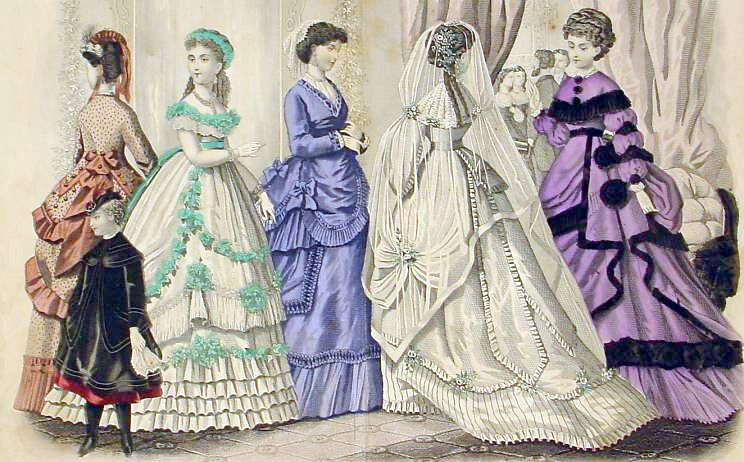 December 1869 – Godeys Ladies Book |
|
 c. 1871 – Unknown |
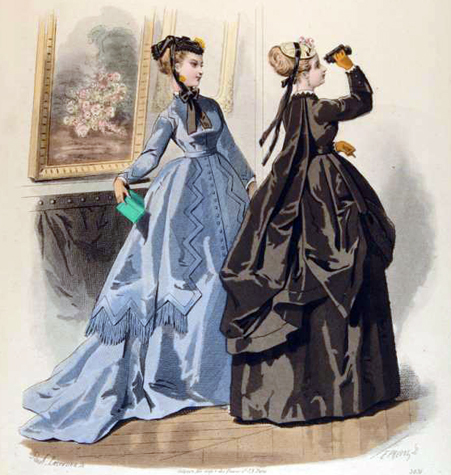 1870 – Revue de La Mode |
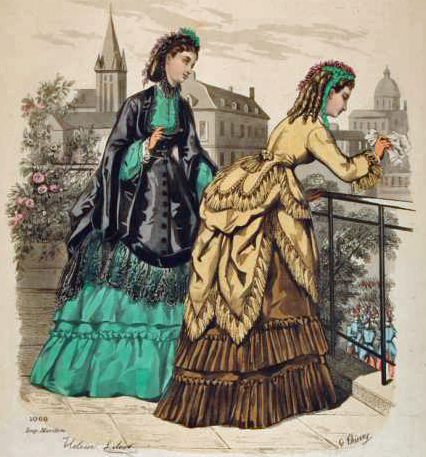 1872 – Le Bon Ton |
| By 1873, bodices bacame longer and longer, and the polonaise was born. A polonaise is like a bodice and overskirt in one garment, in many shapes or styles.
Skirts began to narrow in the front. The underskrits were often separated into sections, with the front, sides and backs trimmed separately to remarkable effect. More trimmings are added than ever before and often completely cover the entire foundation skirt. Sleeves became narrower to the wrist, though still not tight. The two-piece coat sleeve was found on every garment. Full length sleeves were weighted with heavy complicated cuffs that could extend as high as the elbow. Often, the sleeves are cut of a contrasting fabric from the main bodice. |
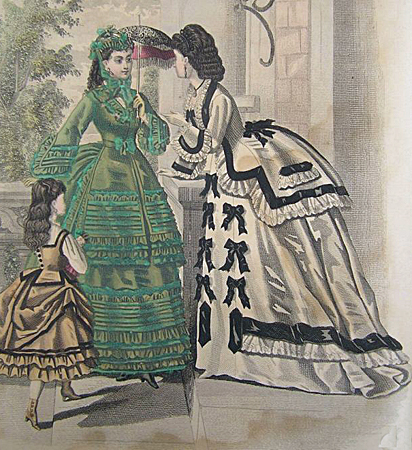 1872 – Demorest Magazine |
 1872 – Demorest Magazine |
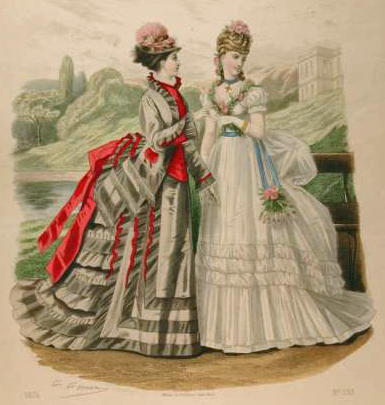 1874 revue de La Mode |
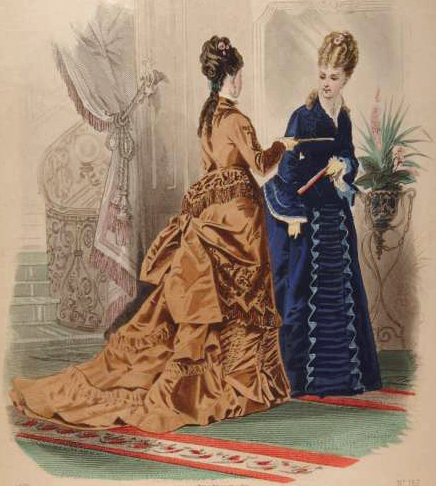 1873 Revue de La Mode |
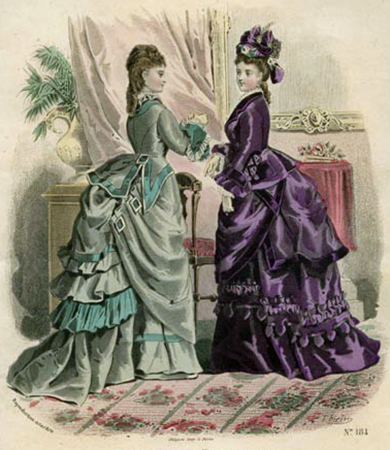 March 1874 – Journal le Printemps |
| In 1875, the bustle began to dwindle in size, but the excess fabric remained. A more vertical line started to appear in trimmings.
For day wear, the neckline could be high (with or with out a collar), square or heart shaped ( in a “V”). Often an open neckline would be filled with a chemisette and full sleeves filled with a linen undersleeve/cuff. Many petticoats were worn to help keep the dress from trailing through the dirt. Often dust ruffles were added to the inside of the train to help as well. Light weight fabrics were popular, especially for evening wear. The shoulder line of the bodice still extended slightly past the natural shoulder. Another interesting style trend in 1875 is the skirt pocket. These pockets were often too low and too far back to be of any practical use, but were very much a stylish decoration. Short lived, the pocket trend only lasted about a year, after being ridiculed as a “boon to pick pockets”. |
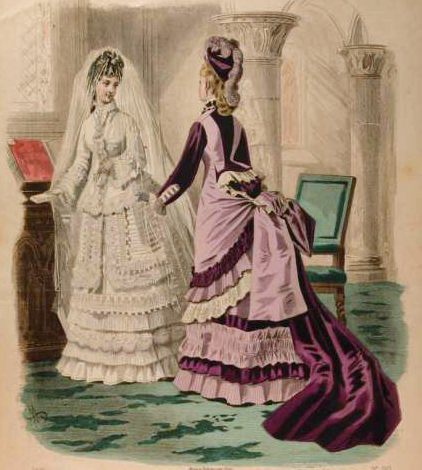 1874 Revue le La Mode |
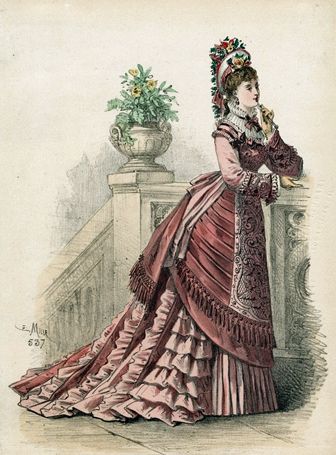 c. 1875 – Unknown |
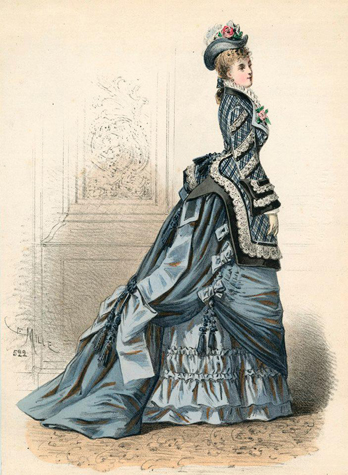 c. 1875 – Unknown |
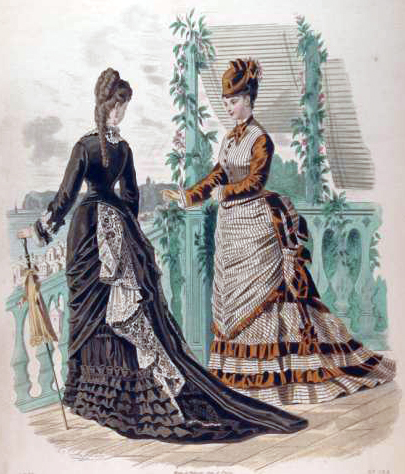 September 1875 – Jounal des Demoiselles |
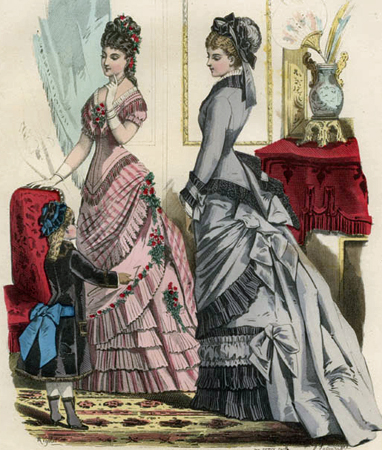 December 1875 – Jounal des Demoiselles |
 1875 – Revue de la Mode |
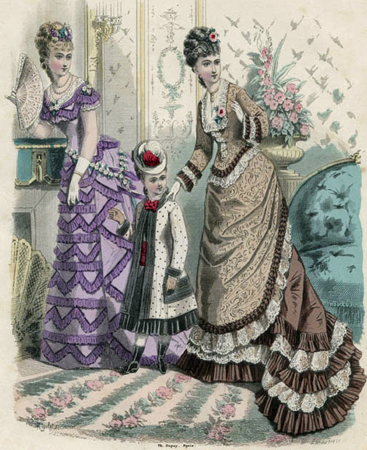 February 1876 – Jounal des Demoiselles |
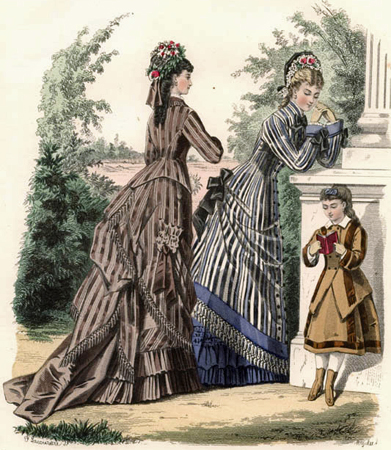 March 1876 – Jounal des Demoiselles |